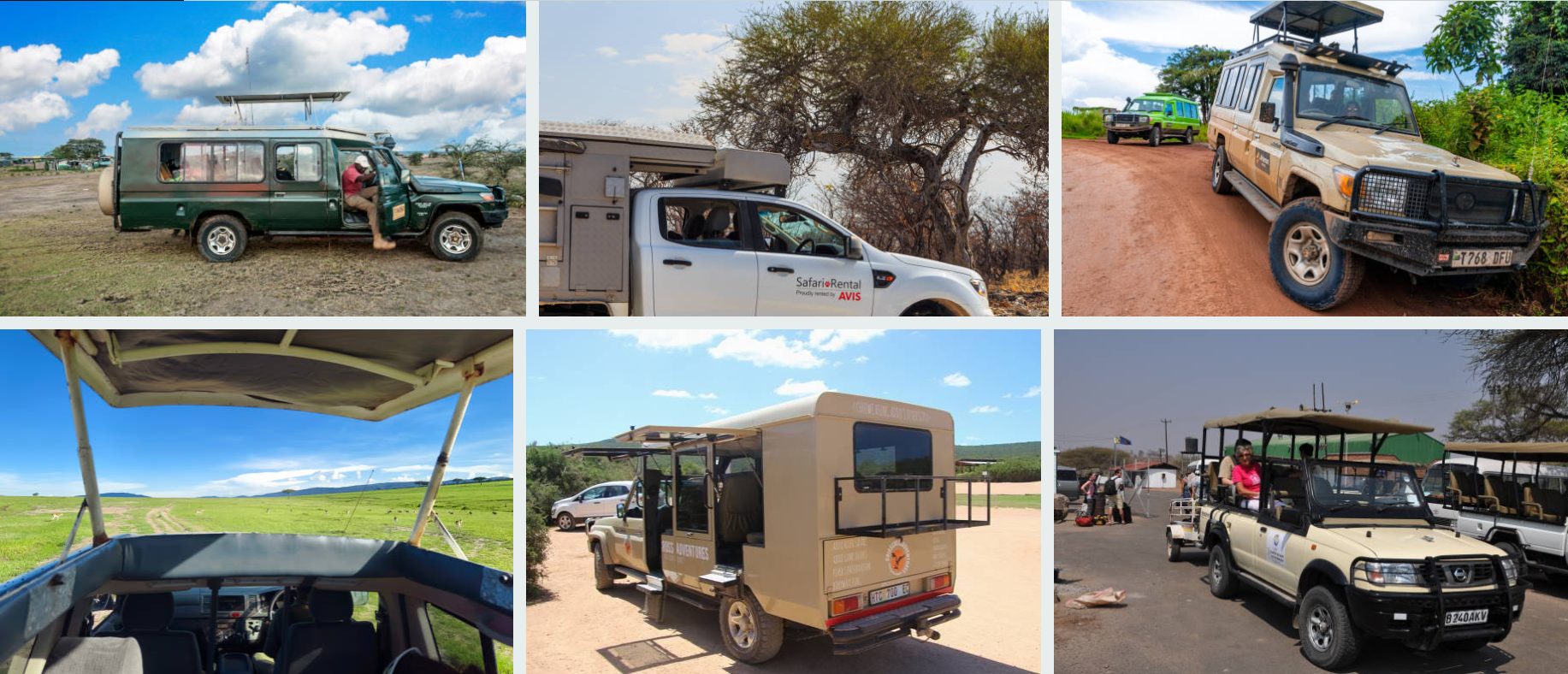Can I Rent a Car and Self-Drive on a Tanzania Safari?
Self-Drive Tanzania Safari, Tanzania is one of the most sought-after safari destinations in Africa, renowned for its breathtaking landscapes, abundant wildlife, and iconic national parks such as the Serengeti, Ngorongoro Crater, and Tarangire. Many travelers dream of exploring Tanzania’s wilderness at their own pace, leading to the question: Can I rent a car and self-drive on a Tanzania safari?
The answer is yes, but with significant considerations. While self-driving offers freedom and flexibility, it also comes with challenges, including road conditions, park regulations, and safety concerns. This article explores the feasibility of a self-drive safari in Tanzania, covering rental options, necessary permits, recommended routes, and essential tips for a successful adventure.
1. Is Self-Driving in Tanzania Safe and Practical?
Before deciding to rent a car for a Tanzanian safari, it’s crucial to assess the practicality and safety of such an endeavor.
Pros of a Self-Drive Safari
-
Freedom & Flexibility: You set your own schedule, spend as much time as you want at sightings, and choose your route.
-
Cost-Effective: Renting a car can be cheaper than booking guided tours, especially for groups.
-
Privacy & Personal Experience: Enjoy a more intimate safari without sharing a vehicle with strangers.
Cons of a Self-Drive Safari
-
Challenging Road Conditions: Many roads in national parks are rough, muddy, or flooded during the rainy season.
-
Wildlife Risks: Without a guide, you may miss animal sightings or unknowingly approach dangerous animals.
-
Navigation Difficulties: Poor signage and limited GPS coverage can make navigation tricky.
-
Park Regulations: Some parks require guides, and off-roading is often prohibited.
Given these factors, self-driving is best suited for experienced off-road drivers who are comfortable handling rugged terrain.
2. Where Can You Self-Drive in Tanzania?
Not all Tanzanian parks allow self-driving, and some have restrictions. Here’s a breakdown:
Parks That Allow Self-Driving
-
Serengeti National Park – Permits self-driving but recommends a guide for better wildlife spotting.
-
Tarangire National Park – A good option for self-drivers, with well-marked roads.
-
Lake Manyara National Park – Smaller and manageable for self-drive safaris.
-
Ngorongoro Conservation Area – Self-driving is allowed, but entering the crater requires a licensed guide.
-
Selous Game Reserve (Nyerere National Park) – Possible, but remote with challenging tracks.
Parks Where Self-Driving is Restricted or Not Recommended
-
Ruaha National Park – Extremely remote with poor roads; a guide is highly advised.
-
Katavi National Park – Isolated and rugged; best explored with an expert guide.
-
Gombe & Mahale Mountains – Accessible only by boat; no self-driving options.
3. Renting a Car for a Tanzania Safari

Types of Vehicles Available
For a Tanzanian safari, a 4×4 vehicle is mandatory. Standard sedans or 2WD cars are not suitable for park roads. Rental options include:
-
Toyota Land Cruiser (Hard-Top or Pop-Up Roof) – The most reliable choice.
-
Land Rover Defender – Sturdy but less common.
-
Toyota Hilux (4×4 Double Cab) – Budget-friendly but less comfortable for long drives.
Rental Companies
Several companies offer 4×4 rentals in Tanzania, including:
-
Kili Car Rental (Arusha)
-
Safari Serengeti Africa (Dar es Salaam & Arusha)
-
Tanzania Adventure & Safaris
-
Self Drive Adventures Tanzania
Cost of Renting a 4×4
Prices vary depending on the vehicle type and rental duration:
-
$100–$250 per day (basic 4×4)
-
$250–$400 per day (luxury safari-equipped Land Cruiser)
Additional costs include fuel, insurance, and park fees.
Essential Rental Requirements
-
Valid International Driving Permit (along with your home country license)
-
Insurance Coverage (ensure it includes off-road and park driving)
-
Security Deposit (usually $500–$2,000, refundable upon safe return)
4. Navigating Tanzanian Roads & Safari Routes
Road Conditions
-
Highways (Between Cities): Generally paved but may have potholes.
-
Park Roads: Mostly dirt tracks, becoming impassable in the rainy season (March–May).
-
GPS & Navigation: Download offline maps (Google Maps or Maps.me) as network coverage is unreliable.
Recommended Self-Drive Safari Routes
-
Northern Circuit (7–10 Days)
-
Arusha → Tarangire → Ngorongoro → Serengeti → Lake Manyara
-
Best for first-time self-drivers.
-
-
Southern Circuit (10–14 Days)
-
Dar es Salaam → Selous → Ruaha → Mikumi
-
More remote and challenging.
-
5. Park Fees & Permits
Self-drivers must pay park entry fees, which can be expensive:
-
Serengeti: $70 per person per day + $40 vehicle fee
-
Ngorongoro Crater: $70 per person + $295 vehicle fee
-
Tarangire & Manyara: $45–$50 per person + $40 vehicle fee
Fees must be paid in cash (USD or TZS) at park gates.
6. Safety Tips for a Self-Drive Safari
-
Never Get Out of the Vehicle – Wildlife is unpredictable.
-
Stick to Designated Roads – Off-roading is illegal and harms the ecosystem.
-
Carry Extra Fuel & Spare Tires – Fuel stations are scarce in parks.
-
Travel in a Convoy if Possible – Breakdowns are common; having another vehicle helps.
-
Avoid Night Driving – Animals are active, and roads are dangerous after dark.
7. Should You Hire a Guide Even if Self-Driving?
While not mandatory in all parks, hiring a part-time guide (available at park gates) enhances the experience. Guides:
-
Know animal hotspots and behaviors.
-
Assist in emergencies (breakdowns, wildlife encounters).
-
Provide cultural and ecological insights.
Is a Self-Drive Safari in Tanzania Worth It?
A self-drive safari in Tanzania is an exhilarating but demanding adventure. It’s ideal for confident drivers seeking independence, but first-time visitors may prefer a guided tour for convenience and safety.
If you decide to self-drive:
✔ Rent a reliable 4×4
✔ Research park regulations
✔ Prepare for rough terrain
✔ Budget for permits and fuel
With proper planning, a self-drive Tanzanian safari can be an unforgettable journey into the heart of Africa’s wilderness.
Would you attempt a self-drive safari, or do you prefer guided tours? Share your thoughts in the comments!










